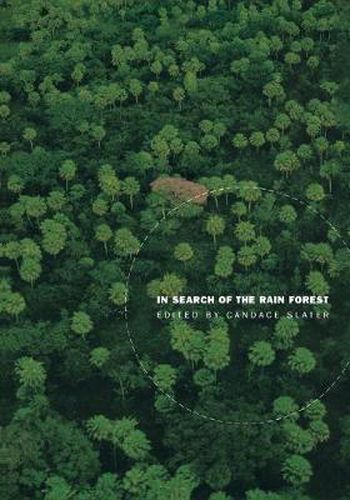Readings Newsletter
Become a Readings Member to make your shopping experience even easier.
Sign in or sign up for free!
You’re not far away from qualifying for FREE standard shipping within Australia
You’ve qualified for FREE standard shipping within Australia
The cart is loading…






The essays collected here offer important new reflections on the multiple images of and rhetoric surrounding the rain forest. The slogan Save the Rain Forest! - emblazoned on glossy posters of tall trees wreathed in vines and studded with monkeys and parrots - promotes the popular image of a marvelously wild and vulnerable rain forest. While such icons have fuelled laudable rescue efforts, these essays show that in many ways they have done more harm than good. Images like these tend to conceal both the biological variety of rain forests and the diversity of their human inhabitants, the contributors contend. They also frequently obscure the specific local and global interactions that are as much a part of today’s rain forests as are their array of plants and animals. Attentive to such complexities, this volume focuses on specific portrayals of rain forests and the consequences of these representations for both forest inhabitants and outsiders. From diverse disciplines - history, archaeology, sociology, literature, law, and cultural anthropology - the contributors provide case studies from Latin America, Asia, and Africa. They point the way toward a search for a rain forest that is both a natural entity and a social history, an inhabited place and a shifting set of ideas. The essayists track how the image of a single, wild and yet fragile forest became fixed in the popular mind in the late 20th century and influenced the policies of corporations, environmental groups, and governments. Such simplistic conceptions, In Search of the Rain Forest shows, might lead companies to tout their green technologies even as they try to downplay the dissenting voices of native populations. Or they might cause a government to create a tiger reserve that displaces peaceful peasants while opening the doors to poachers and bandits. By encouraging a nuanced understanding of distinctive, constantly evolving forests with different social and natural histories, this volume provides an important impetus to crafting protection efforts that take into account the rain forest in all of its complexity.
$9.00 standard shipping within Australia
FREE standard shipping within Australia for orders over $100.00
Express & International shipping calculated at checkout
The essays collected here offer important new reflections on the multiple images of and rhetoric surrounding the rain forest. The slogan Save the Rain Forest! - emblazoned on glossy posters of tall trees wreathed in vines and studded with monkeys and parrots - promotes the popular image of a marvelously wild and vulnerable rain forest. While such icons have fuelled laudable rescue efforts, these essays show that in many ways they have done more harm than good. Images like these tend to conceal both the biological variety of rain forests and the diversity of their human inhabitants, the contributors contend. They also frequently obscure the specific local and global interactions that are as much a part of today’s rain forests as are their array of plants and animals. Attentive to such complexities, this volume focuses on specific portrayals of rain forests and the consequences of these representations for both forest inhabitants and outsiders. From diverse disciplines - history, archaeology, sociology, literature, law, and cultural anthropology - the contributors provide case studies from Latin America, Asia, and Africa. They point the way toward a search for a rain forest that is both a natural entity and a social history, an inhabited place and a shifting set of ideas. The essayists track how the image of a single, wild and yet fragile forest became fixed in the popular mind in the late 20th century and influenced the policies of corporations, environmental groups, and governments. Such simplistic conceptions, In Search of the Rain Forest shows, might lead companies to tout their green technologies even as they try to downplay the dissenting voices of native populations. Or they might cause a government to create a tiger reserve that displaces peaceful peasants while opening the doors to poachers and bandits. By encouraging a nuanced understanding of distinctive, constantly evolving forests with different social and natural histories, this volume provides an important impetus to crafting protection efforts that take into account the rain forest in all of its complexity.